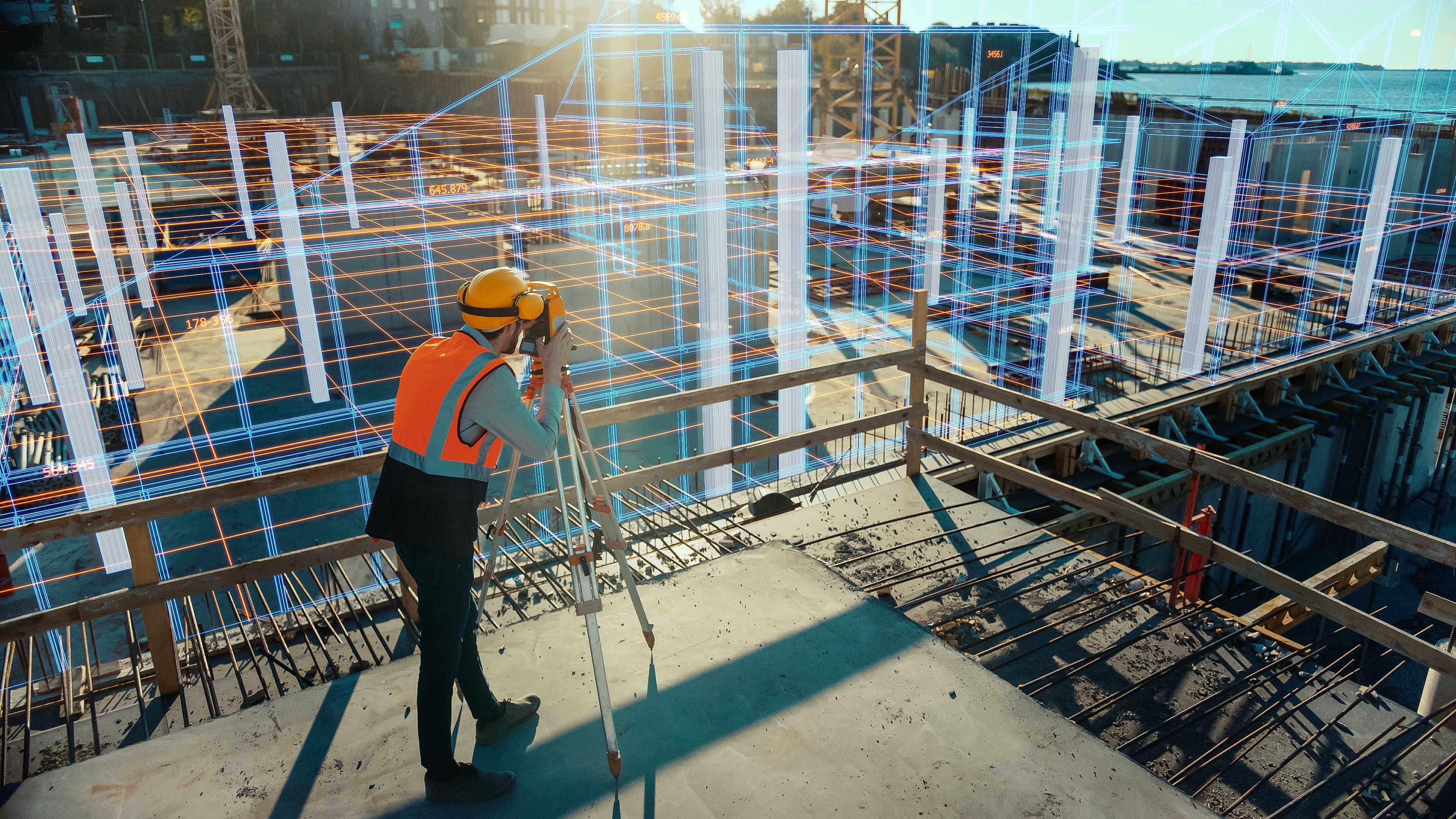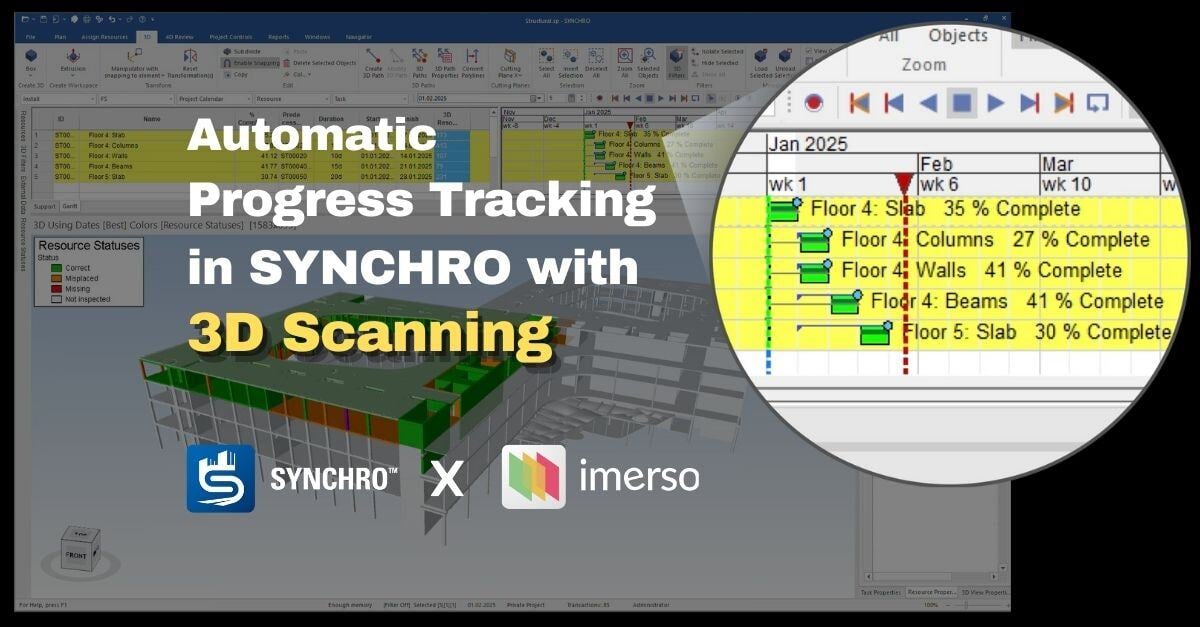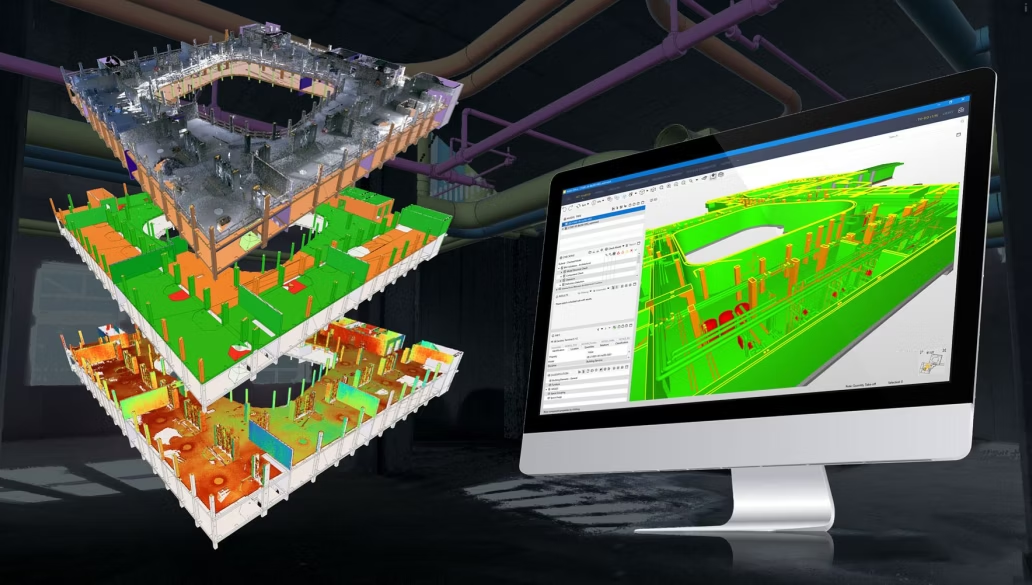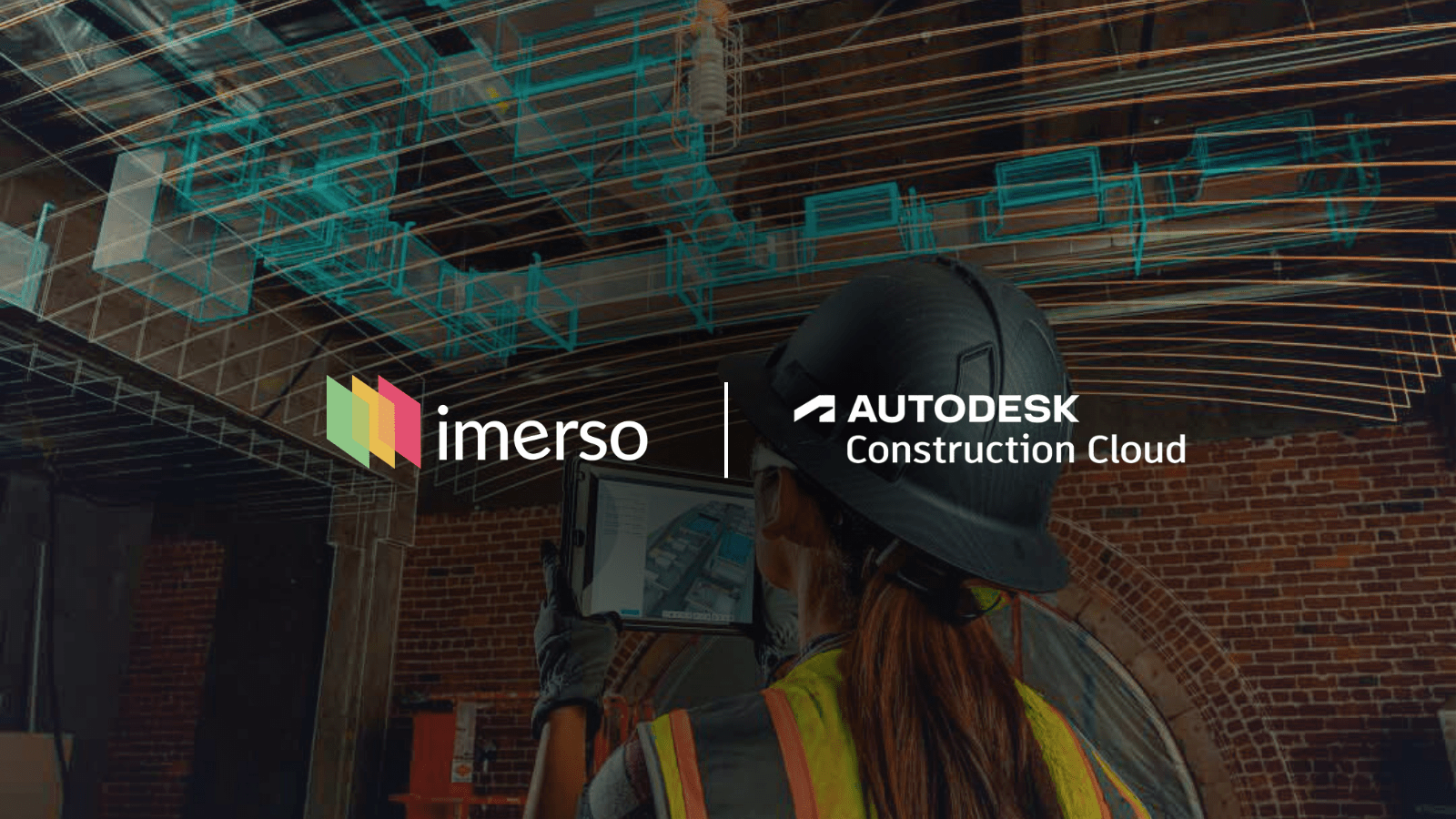Table of Contents
Trend 1: Sustainable Construction
Trend 3: Construction Software
Trend 5: Digital Twins in Construction
Trend 6: 3D Scanning, AKA Laser Scanning
Trend 1: Sustainable Construction
Sustainability in construction refers to the use of materials, techniques, and processes that minimise the negative impact on the environment, while maximising the efficient use of resources. The ultimate goal of sustainability is providing safe and healthy spaces for people to live and work, through the use of renewable energy sources, green building materials, and efficient construction practices.
Despite the growing awareness of the importance of sustainability in construction, its implementation remains fairly low. The reasons for this include:
- lack of government regulations,
- limited access to sustainable materials and technologies,
- the misconception that sustainable construction is more expensive.
However, sustainability in construction matters because it has significant environmental, social, and economic benefits. Sustainable construction reduces greenhouse gas emissions, conserves resources, and improves air and water quality. Finally, sustainable construction can lead to long-term cost savings, increased property value, and a more resilient built environment.
According to a 2021 survey, roughly 85% of consumers have a preference for sustainable products and services, a third of whom are willing to pay more for them. This translates equally to real-estate considerations: agents commonly see a boost in sales when energy efficiency is mentioned in their listings.
Why Sustainability in Construction is Important?
In Europe, the building sector is responsible for approximately 40% of total energy consumption and 36% of CO2 emissions. It’s estimated that the construction phase of a building is responsible for approximately 20-30% of the building's total carbon footprint, while the remaining 70-80% comes from the energy consumption of the building over its lifetime.
Sustainable construction involves more than just efficient resource usage in construction projects. It requires consideration of the environmental impacts from material sourcing and construction processes. It means assessing projects not just in terms of business benefit, but also from their impact on the environment, community, and world.
Sustainability is a critical issue and a major focus point for the coming years. This is because the construction industry is one of the largest contributors to carbon emissions. By adopting sustainable practices and reducing pollutants, construction companies can help mitigate the effects of climate change, protect human health, and promote social and economic equality.
In addition, sustainable construction practices can lead to cost savings, increased property values, and reduced insurance premiums over the long term. By prioritising sustainability, we can create a better future for ourselves and generations to come.
How to Build Following Sustainable Construction Principles?
Construction materials
“There’s no material that’s perfect. There are some common characteristics of materials that have low embodied energy.”- Mike Stopka, Building and built environments lead, Delta Institute
The selection of sustainable materials for building projects requires a comprehensive and thoughtful approach that balances environmental, social, and economic considerations.
First, start by researching and understanding what sustainable materials are available and what makes them sustainable. This may involve consulting with industry experts, attending sustainability-focused conferences and events, or conducting online research.
Some examples of sustainable materials include:
- Mass timber
- Bendable ECC concrete
- Bamboo
- Salvage materials
- Precast concrete
Another important consideration is the health and safety implications of the materials for the people who will be using the building. Sustainable materials should be free of harmful chemicals and have a low carbon footprint.
Once you’ve identified sustainable materials, prioritise the selection based on the needs of your project, including performance requirements, cost, and availability. Consider also the potential for collaboration with suppliers, manufacturers, and other stakeholders to identify and source new and innovative sustainable materials.
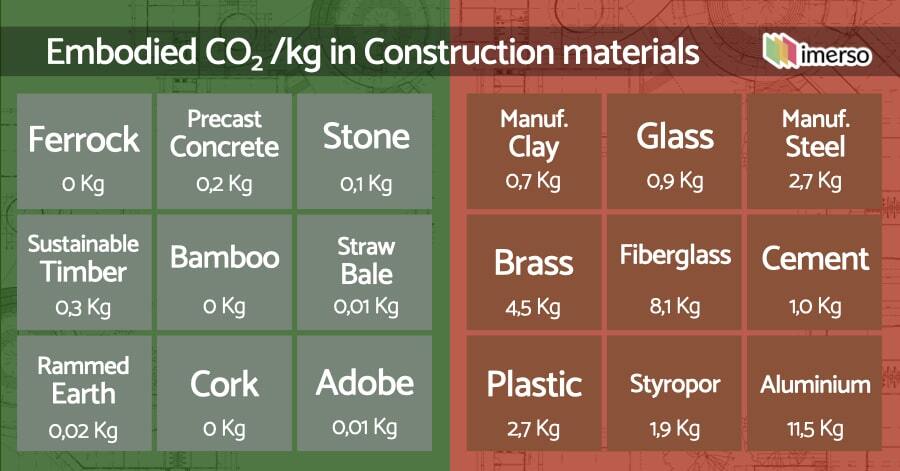 Construction methods
Construction methods
Sustainable construction entails more than just renewable materials; it also involves implementing sustainable methods to reduce construction waste, improve team coordination to eliminate work errors, delays, and unnecessary site travels, optimise building plans for use of off-site fabrication and prefab elements.
Here are some of the most sustainable construction methods and what makes them so:- Passive House Design - a method focused on optimising the building envelope to minimise energy consumption. This involves using highly insulated materials, air-tight building envelopes, and efficient ventilation systems. As the result, the building requires minimal energy for heating and cooling, which significantly reduces its carbon footprint.
- Green Roofs involve the use of vegetation and soil to cover a building's roof surface. They provide numerous benefits, including reducing stormwater runoff, improving air quality, and reducing the urban heat island effect. Green roofs also provide additional insulation for the building, reducing energy consumption.
- Modular Construction involves the use of prefabricated building components that are assembled off-site and then transported to the building site for final assembly. This method reduces construction waste and energy consumption by optimising material use and reducing on-site construction time.
- Biophilic Design incorporates natural elements, such as sunlight, vegetation, and water, into building design. It's proven to improve occupant health and well-being, reduce stress levels, and increase productivity.
- Net-Zero Energy Buildings designed to produce as much energy as they consume over the course of a year. This is achieved through the use of renewable energy sources, such as solar panels, and high-efficiency systems, such as lighting and HVAC.
Here are some of the most unsustainable practices:
- Waste and Debris Disposal. The construction industry generates a significant amount of waste and debris, much of which ends up in landfills. This not only creates a strain on resources, but also contributes to pollution and greenhouse gas emissions.
- Energy Consumption. The use of fossil fuels to power construction equipment and tools contributes to greenhouse gas emissions and climate change. Additionally, buildings that aren’t designed to be energy-efficient require more energy to operate, which further exacerbates the problem.
- Water Consumption.The construction industry also uses a significant amount of water, which is often wasted through inefficient practices. This can lead to water shortages and conflicts, particularly in areas that are already experiencing water scarcity.
- Transportation. The move of materials and equipment to and from the jobsite generates significant emissions and can contribute to traffic congestion and air pollution.
- As Built Documentation. Lack of accurate documentation of the anatomy of the finished building creates long-term costs and inefficiencies in operations and maintenance. Improving digital documentation of what has been built in reality, is becoming an increasing focus of sustainability, so that owners and operators can reliably use this data to operate and upkeep the building efficiently for decades to come. Learn how Betonmast succeed in building sustainable projects. >>
Trend 2: Lean Construction
We have to as an industry do a better job delivering projects on time and budget.” - Geno Armstrong, Sector Leader, Engineering and Construction, KPMG International.
Lean construction is a methodology that focuses on maximising work efficiency and reducing waste in the building process. It's based on the principles of Lean Manufacturing, which was originally developed for the automotive industry to optimise worker productivity, maximise value-creation, eliminate waste, and enable continuous improvement.
What are lean construction practices?
Lean construction practices include value stream mapping, continuous measurement of completed works and improvement iterations at every stage, and close collaboration between all parties involved in the building process. Through these methods, the construction industry can reduce costs and material waste, increase work productivity, and improve the quality of construction.
.jpeg?width=900&height=471&name=Lean.001-min%20(1).jpeg)
Achieving such lean construction requires usage of modern software tools for managing and controlling construction projects. Learn how Byggstyrning improves quality control in prefabricated construction. >>
What are the benefits of lean construction?
Dodge Data & Analytics found a statistically significant correlation between high Lean intensity projects and likelihood to complete ahead of schedule or under budget. While the research was focused on the project business case; the benefits extend to the individuals and businesses of both owners and service providers for the project including:
- Reduced costs and improved profitability
- Increased employee engagement
- Better work/life balance
Trend 3: Construction Software
Demand for new construction software
Construction software has seen significant advancements in recent years, revolutionising the way the industry operates. From project management to quality control and safety inspections, construction software is making the building process faster, more efficient, and more cost-effective.“Projects cost too much, they take too long and I think it’s time to see how we can improve that.” - Camelia Bucur, Global Director, Risk Management, Hatch.
According to analysts, the construction software market is expected to grow rapidly worldwide due to the trend of using data-driven, integrated processes to manage construction projects efficiently. The industry requires software solutions with tracking capabilities, reporting tools, file sharing, real-time updates, financial planning, accounting systems, and project documentation.
“Somebody else will come along. Some of these disruptors, who have no fear, have very deep pockets. It’s a risk, but it’s also an opportunity.” - Jon Field, CEO, Engineering & Construction Risk Institute (ECRI).
New cloud-based construction software
Cloud-based solutions allow for easy access to project data from any location, reducing the need for physical documents or in-person visits, and improving collaboration between team members. Additionally, the use of mobile applications is becoming increasingly popular in the industry, giving construction workers direct access to project data and information on the go. Cloud technologies are rapidly improving the two core flows of information in any construction project: from the office to the site, and from the site to the office.
Some examples of new tech construction software include:
Trend 4: AI in Construction
Artificial intelligence (AI) is becoming increasingly important in the construction industry. AI can help with everything from project planning and work scheduling, to making faster and more informed decisions.
The integration of AI in construction is revolutionising the way the industry operates, particularly regarding site monitoring and automatic quality control and status inspections. AI algorithms can analyse large amounts of construction data, well beyond what human inspectors can achieve manually, thus helping to identify trends and predict potential problems before they occur.
Inspections can be carried out using 3D scanners which are becoming mainstream, reducing the need for manual inspection and increasing the accuracy of data collected. AI can thus be applied to analyse this virtual replica of the jobsite (ie. a digital twin strategy) to detect any potential quality control issues and flag them for review.
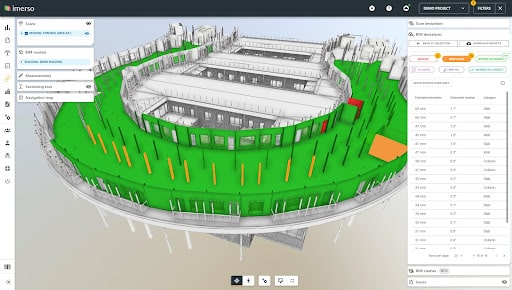
Imerso Inspector feature in force
“We need to accelerate the use of technology and adaptation of AI and machine learning. We aren’t moving fast enough”. - Geno Armstrong, Sector Leader, Engineering and Construction, KPMG International.
Moreover, AI can assist with the identification of potential safety hazards on construction sites, helping to minimise the risk of accidents and ensuring that workers and the public are protected. By using AI for construction quality control and status inspections, companies can save time, reduce costs, and improve the overall quality of their projects.
Trend 5: Digital Twins in Construction
A digital twin is a digital representation of a physical object, and in construction, it refers to a virtual model of a building. Digital twins in construction can provide a wealth of information about a building, including its design, materials, and components. As described in the chapter above, they can also be used to monitor construction performance and identify potential problems before they occur.
In the future, digital twins in construction will become even more important. They will be used to simulate real--world scenarios and help with decision-making during the building process. For example, they can be used to test different design options and see how they would perform in different conditions, such as wind and earthquakes. They can also be used to monitor the building's energy consumption and identify ways to improve efficiency.
Trend 6: 3D Scanning, AKA Laser Scanning
3D scanning is a powerful tool for creating a digital twin of a construction project, providing a millimetre-accurate virtual representation of the building throughout the construction phase. By using 3D scanning, construction companies can accurately capture and track the physical details of a building, including its geometry, structure, and components – as the construction progresses.
The digital twin can thus be used to track the progress of the construction project, allowing for real-time updates on the status of the build. This helps to reduce the risk of delays and cost overruns and improves collaboration between team members.
As this technology becomes widespread, the use of 3D scanning and digital twins in construction is leading to a more sustainable, efficient, and cost-effective building process, with a greater focus on accuracy, safety, and quality.
Conclusion
Construction is still largely lagging behind other industries in terms of efficiency and productivity. However, the industry is rapidly adopting Lean construction and digital information flows through the use of construction software. The integration of advanced technologies, such as AI, 3D scanning and digital twins, will play an increasingly critical role in driving efficiency and sustainability in the construction industry.
About Imerso
Imerso is a software platform that combines BIM, Reality Capture, and AI technologies to automate construction site supervision and quality inspections with one simple workflow. We help construction companies cut project risks and delay costs with real-time monitoring of site status and work quality. Learn more here. >

.png?width=350&height=147&name=Imerso_Logo_A4_White_Transp%201%20(1).png)
